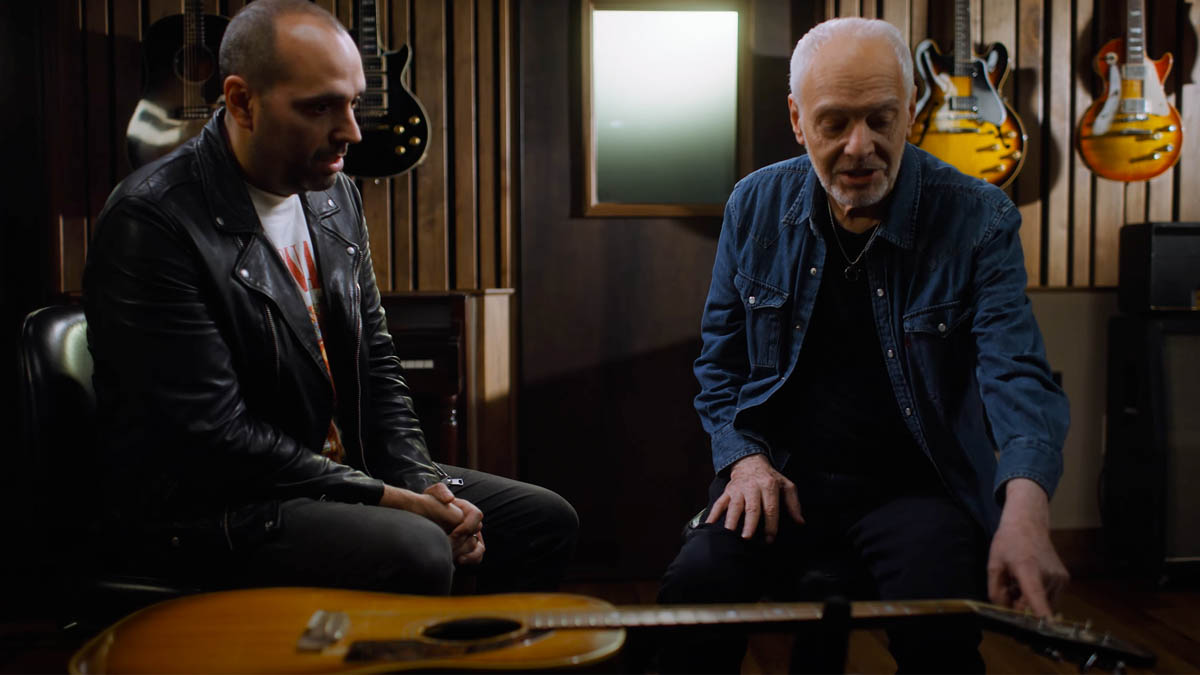“When people went in to look at the gear they went in on jet skis… So many people lost their guitars”: Peter Frampton says he lost 44 guitars in the 2010 Nashville flood
One of the guitars to survive the flood was Frampton's Epiphone Texan that he famously used to write Show Me The Way and Baby, I Love Your Way both on the same day

Peter Frampton has revealed that he lost 44 guitars in the Tennessee floods of 2010, and that the water level was so high in the rehearsal studios where his guitar was kept that people entered the facility on jet skies.
Speaking with Gibson’s Mark Agnesi, on the latest episode of GibsonTV’s The Collection, Frampton said he was living out in Cincinnati at the time and was trying to get to Nashville, only to be told that every plane was cancelled.
“I kept calling people in Nashville,” Frampton recalls. “I said, ‘What’s going on? Every time I get on a plane it’s cancelled?’ And they said, ‘Oh it’s terrible weather here.’ I didn’t realise how bad it was.”
And it was bad. The rain and thunderstorms arrived on 1 May and devastated great swathes of Tennessee, with 13.57” of rain arriving in the first two days alone, doubling a record set in 1979 by Hurricane Frederic. The Cumberland River was fit to burst. SoundCheck studios, which is one of Music City’s top backline rental and tour support facilities, sits right on the Cumberland.
“Bands that didn’t even live in Nashville had their gear stored at SoundCheck, right by the river,” says Frampton. “They said, ‘We’re going to have to open the dam.’ Because it was getting crazy; it would have broken otherwise. They said it would probably get to the bottom of the steps of SoundCheck. Well, it didn’t. It went all the way up. And when people went into look at the gear they went in on jet skies… My Marshalls were just above the water line.”
The flood was catastrophic. Thirty-one people died across Tennessee, Kentucky and Mississippi. By 4 May, central Nashville lost power. The total damage to property was $2.3 billion. A lot of guitars were lost. “So many people lost their guitars,” says Frampton. “I mean, I lost 44 guitars.”
A lot of the Les Pauls just split. There was so much stuff in the water there… there was all battery acid in the water. You name it, it was in the water. It was so horrible
Many of those were Les Pauls. Frampton had them sent to the now-retired Mike McGuire at the Gibson Custom Shop to see if they could be saved. McGuire and Frampton had previously worked together on Frampton’s first signature Les Paul in 2000. But McGuire had bad news for Frampton.
Want all the hottest music and gear news, reviews, deals, features and more, direct to your inbox? Sign up here.
“He said, ‘There’s so much toxicity in these guitars you won’t be able to get paint on them to redo them.’ And a lot of the Les Pauls just split,” says Frampton. “There was so much stuff in the water there… there was all battery acid in the water. You name it, it was in the water. It was so horrible.”
Luckily, Frampton had insurance. Miraculously, his most-famous acoustic guitar survived the ordeal, with his 1964 Epiphone FT-79 Texan – a little water damage to the headstock and body notwithstanding – lived to tell the tale.
“I saved my Epiphone acoustic, the Texan, ’64 Texan that I wrote all the songs on,” he says. “A lot of the acoustics, the top and the back… the sides just went like this [came apart] because they were underwater for three days.”
Frampton’s guitars, of course, have a reputation for living a charmed life. His 1954 “Phenix” Les Paul Custom, from the cover of Frampton Comes Alive, and takes a starring role in this episode of The Collection, famously survived a plane crash in 1980.
Frampton would ultimately be reunited with the guitar 30 years later, with Gibson overseeing its restoration – and later releasing it as a signature guitar in the early ‘00s, and again in 2021 as a VOS replica Phenix.
You can read more about the VOS Peter Frampton “Phenix” Les Paul Custom at Gibson, and watch Frampton in conversation with his epic collection of acoustic and electric guitars above.
Jonathan Horsley has been writing about guitars and guitar culture since 2005, playing them since 1990, and regularly contributes to MusicRadar, Total Guitar and Guitar World. He uses Jazz III nylon picks, 10s during the week, 9s at the weekend, and shamefully still struggles with rhythm figure one of Van Halen’s Panama.


